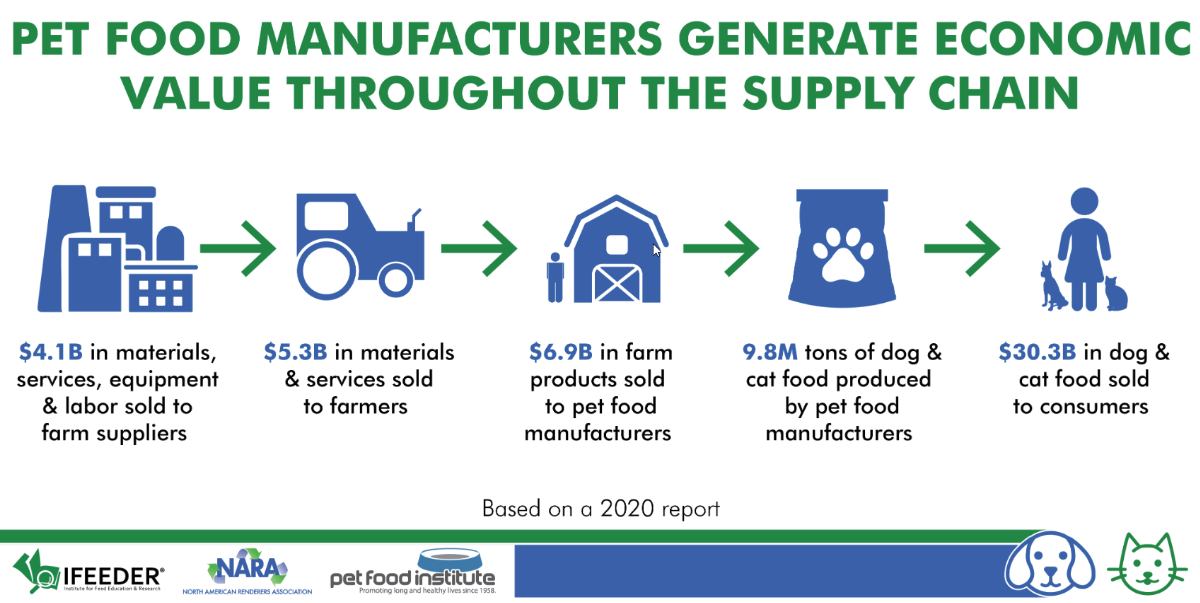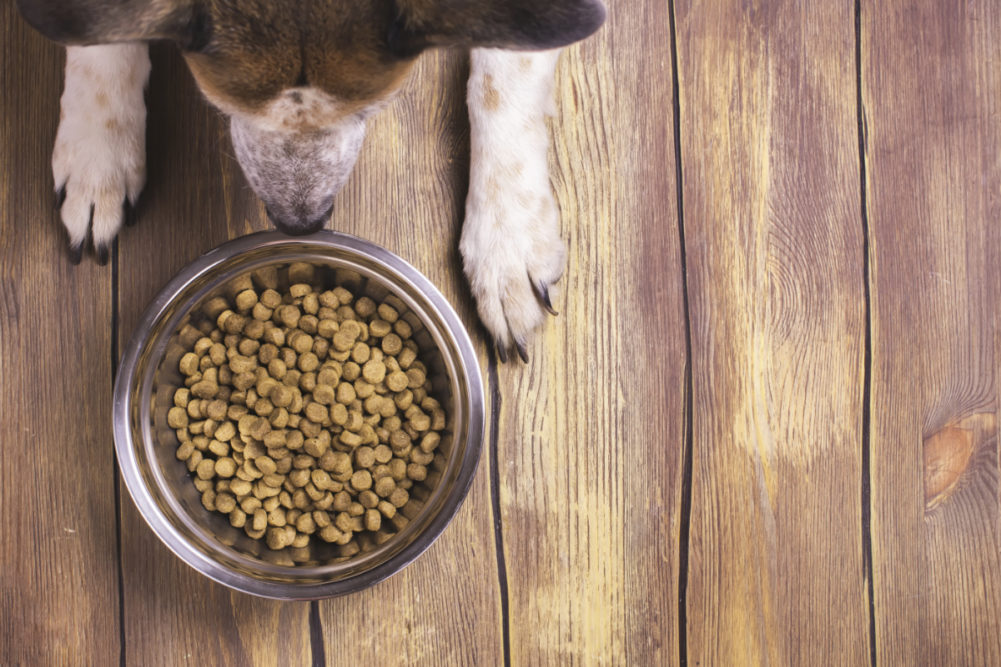WASHINGTON, DC, US – A new report shows US pet food manufacturers’ ingredient needs driving the US agricultural economy while reducing food waste.
The Institute for Feed Education and Research (IFEEDER), the North American Renderers Association (NARA) and the Pet Food Institute (PFI) released a jointly funded report about the purchasing power of the $30 billion pet food industry and its economic implications for US agriculture and rural communities.
“This is the first time our three organizations — IFEEDER, NARA and PFI — have partnered using our unique expertise to address a knowledge gap on behalf of our members,” said Constance Cullman, president of IFEEDER. “We were able to develop a comprehensive study that illustrates just how remarkable our industry is at feeding America’s cats and dogs, stimulating the rural economy and meeting its commitments to sustainability.”
The data, compiled and presented by the economic research and analysis firm Decision Innovation Solutions (DIS), shows that US pet food manufacturers use 8.65 million tons of animal and plant-based ingredients, at a value of $6.9 billion.
Research also found pet food manufacturers use 4 million tons of farm and farm-product processor ingredients, such as grains, soy products, fruits, vegetables and seafood products.
According to the report, US pet food manufacturers produced 10 million tons of dog and cat food between June 2018 and June 2019. It also noted pet food manufacturers are purchasing a majority of their ingredients in the country’s Heartland region, in particular Missouri, Kansas, Pennsylvania, Iowa and Ohio.

These pet food ingredient purchases lead to the purchase of an additional $5.3 billion of important materials and services for farmers and farm processors, such as crop inputs, machinery and labor, the report said. In addition, those suppliers buy an additional $4.1 billion in services, equipment and labor to meet related needs, the report said.
“Two-thirds of US households have a pet at home, meaning that the pet food industry not only plays an important role in the lives of more than 100 million families, but also for our country’s agricultural community,” said Dana Brooks, president and chief executive officer (CEO) of PFI. “This data is an important step in helping to quantify the economic value this industry brings to our economy and all of US agriculture. As pet lovers, we’ve known the value that pets bring to our lives but can now further confirm the significance of the entire pet food industry.”
Pet food manufacturers also are reducing waste with rendered protein ingredients. Rendering reduces food waste by transforming otherwise unused portions of an animal to create safe and nutritious pet food ingredients. According to the report, the rendering process also naturally returns billions of gallons of water into the environment as clean water and has a greenhouse gas reduction equivalent of removing millions of cars off the road, all sustainable practices that are reflected in the finished pet food product.
“With pet parents’ growing interest in the sustainability and carbon footprint of their pets’ food, we feel it is important to highlight that the rendered protein ingredients in their pets’ food is not only nutritious but is also helping to reduce food waste,” said Nancy Foster, president and CEO of NARA. “While about half of an animal isn’t eaten by people, that food provides proteins that our pets crave due to the high nutrient content. Rendering takes that material, which would have otherwise been wasted in landfills or going down the drain and transforms it into the safe and nutritious pet food that dogs, and cats need.”
To read the full report, visit ifeeder.org.






